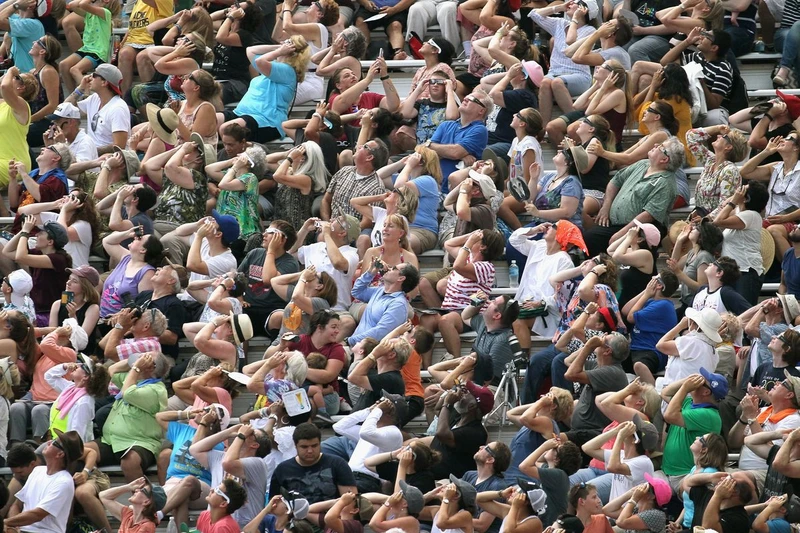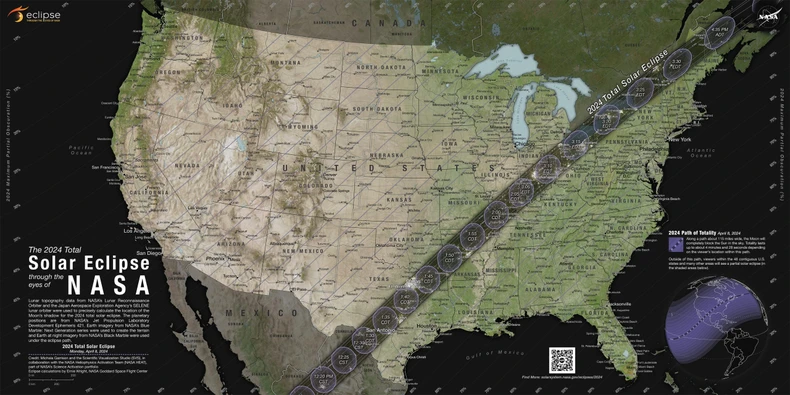A total solar eclipse will take place on April 8 across North America, and it could be the most watched solar eclipse ever.
 |
| Crowds watch the solar eclipse at Saluki Stadium at Southern Illinois University in Carbondale, Illinois, USA in 2017 |
A solar eclipse occurs when the moon passes between the sun and the earth, casting a shadow on our planet. The first place in North America to witness a total solar eclipse, when the moon completely covers the sun, will be Mazatlán in Sinaloa, Mexico, starting at 11:07 a.m. MST, or 07:07 a.m. on April 9, Vietnam time, and lasting for 4 minutes and 20 seconds.
The total eclipse will then pass over two more Mexican cities, Durango and Coahuila. The path of the total eclipse will then cross into Texas before moving through 14 other US states and then into Canada.
The difference in this eclipse is that the moon will cover the sun for up to 4 minutes and 28 seconds. While previous eclipses have occurred in remote parts of the world, this one will pass over major cities.
According to NASA, an estimated 31.6 million people lived in the path of the total eclipse in the United States, compared to about 12 million people during the last total eclipse that passed through the U.S. in August 2017.
This could be one of the most watched solar eclipses ever.
 |
| Map illustrating the path of the moon's shadow across the United States during the 2024 total solar eclipse. Source: NASA. |
During a total solar eclipse, for locations within the path of totality, which includes a 185 km wide path across North America, observers will be able to see the moon cover 100% of the sun.
Eclipse enthusiasts are expected to flock to cities and towns along the strip of land that cuts through Mexico, into the United States and Canada.
For locations outside the path of the total eclipse, although a total eclipse is not visible, a partial eclipse may still be visible.
To safely view a solar eclipse, you must use solar filters. Even cameras, telescopes, and binoculars will need to have solar filters placed in front of the lens. Only people in the area of totality will be able to remove their glasses for a short time to see the corona with the naked eye. People viewing a partial eclipse must wear their glasses the entire time.
Peoplelove astronomyEven if you can't see the eclipse in person, you can still watch it in full online at NASA.
The next total solar eclipse is scheduled to occur in 2026 and will pass over the Arctic, Greenland, Iceland, the Atlantic Ocean and northern Spain. The next eclipse in 2027 will also pass over Spain and northern Africa, lasting a total of six and a half minutes.
North Americans will have to wait until 2033 to see another total solar eclipse, but only in Alaska. In 2044, Western Canada, Montana, and North Dakota will see an eclipse. And in 2045, the United States will once again experience a total solar eclipse from coast to coast.